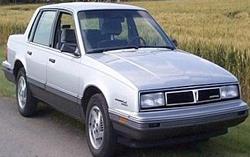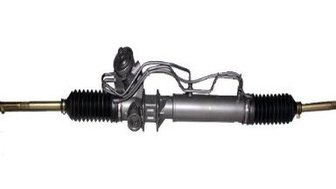
How to check rack and pinion steering properly. I have had a lot of experience with this type of steering system because it really gained popularity during the late 80s and early 90s at the height of my career. In the mid-80s General Motors installed Rack and pinion on their best selling “A” body car line.
This included popular vehicles like the Chevy Celebrity and the Pontiac 6000 and the sport model A bodies like Euro and STE. This is when I became more familiar with a measurement tool called the spring scale, which I have used on deep sea fishing trips but never on car repairs. The spring scale is connected to the steering wheel and used to calculate the amount of force required to move the steering wheel.
Customers would complain about their A body model GM vehicle having increased stiffness in the steering system. This customer complaint was most often on a vehicle that sat overnight in cold conditions. When the customer started the vehicle the steering was stiff only for a minute or two.
Mechanics and service writers coined the condition as steering rack morning sickness. The problem would only happen once a day in the morning, and the vehicle had normal operation throughout the rest of the day.
General Motors and their team of scientists determined that the internal seals would shrink and bypass fluid pressure under cold conditions or on a worn rack assembly. The fix was to replace the seal kits, flush the power steering system, install an inline filter as well as replacing any scored parts inside the rack assembly. This was not a fun repair and the steering rack and pinion assembly had to be removed from the vehicle completely.

The rack and pinion steering systems today are much more reliable and continue to advance. Example, the latest type of rack and pinion steering is the electric version. This high-tech system does away with hydraulic fluid completely. There is no power steering pump, no hoses or lines that can leak or fail. Also, you will have full power steering control even if the engine stalls.
The reliability of the electric rack motor has not been verified yet because of the lack of long term testing and information. But so far so good and the future of this system is very bright. Even hybrid and fully electric cars will need a steering system. The electronic rack is considered a green method of accomplishing power steering while maintaining driver comfort.
Checking Rack and Pinion Steering Systems
One of the most common problems on today’s steering systems would be a loose inner tie rod socket assembly. The plastic bellows that cover the steering part hampers checking the inner tie rod end.
This is why it is highly recommended to either loosen the bellows clamp or remove it completely so you can get an accurate test. On most models you can gently push the bellows out of the way so that the inner tie rod and joint can be seen clearly.
Now when you move the wheels side to side you get a good feel of the joints looseness. Next thing to check is the rack and pinion steering mounting bushings. They are usually rubber or polyurethane and solely responsible for holding the steering rack in place.
This is extremely important because they can cause noise complaints and loose steering problems. The mounting bushings can deteriorate from the heat of the engine compartment and are also susceptible to damage from engine oil leaks that can increase the deterioration the bushings.
When this common problem happens, the housing moves within its mounting and can cause a loose steering feeling or even erratic steering (bump steer).
Perform a shakedown test on all of the steering racks connected components. This will differ depending on the application. Some of the things to look for would be play in the universal joints that attach the steering coupler to the pinion on the rack itself.
If any play is found. It is recommended to replace the universal joint. Also note that in some cases these universal joints will have maintenance grease fittings. Also during the shakedown look for movement on the outer tie rod ends were they attach to the spindle. As well as the inner ends as mentioned above.
Don’t forget to carefully inspect the aluminum rack housing itself for damage. If any signs of fluid leaks are evident they should be diagnosed and repaired before further damage occurs.
The power steering system does not hold much hydraulic fluid and when the fluid drains out the power steering pump can be destroyed quickly. The P/S fluid provides pressure to steer the wheels but also lubricates and cools the pump. Give this steering rack page a bookmark or share with a friend.
More information about steering and suspension is available on the main section page. This next link takes you from rack and pinion to car suspensions.
Find out what else is covered on this diy auto repair website and find out how to ask car repair questions.

